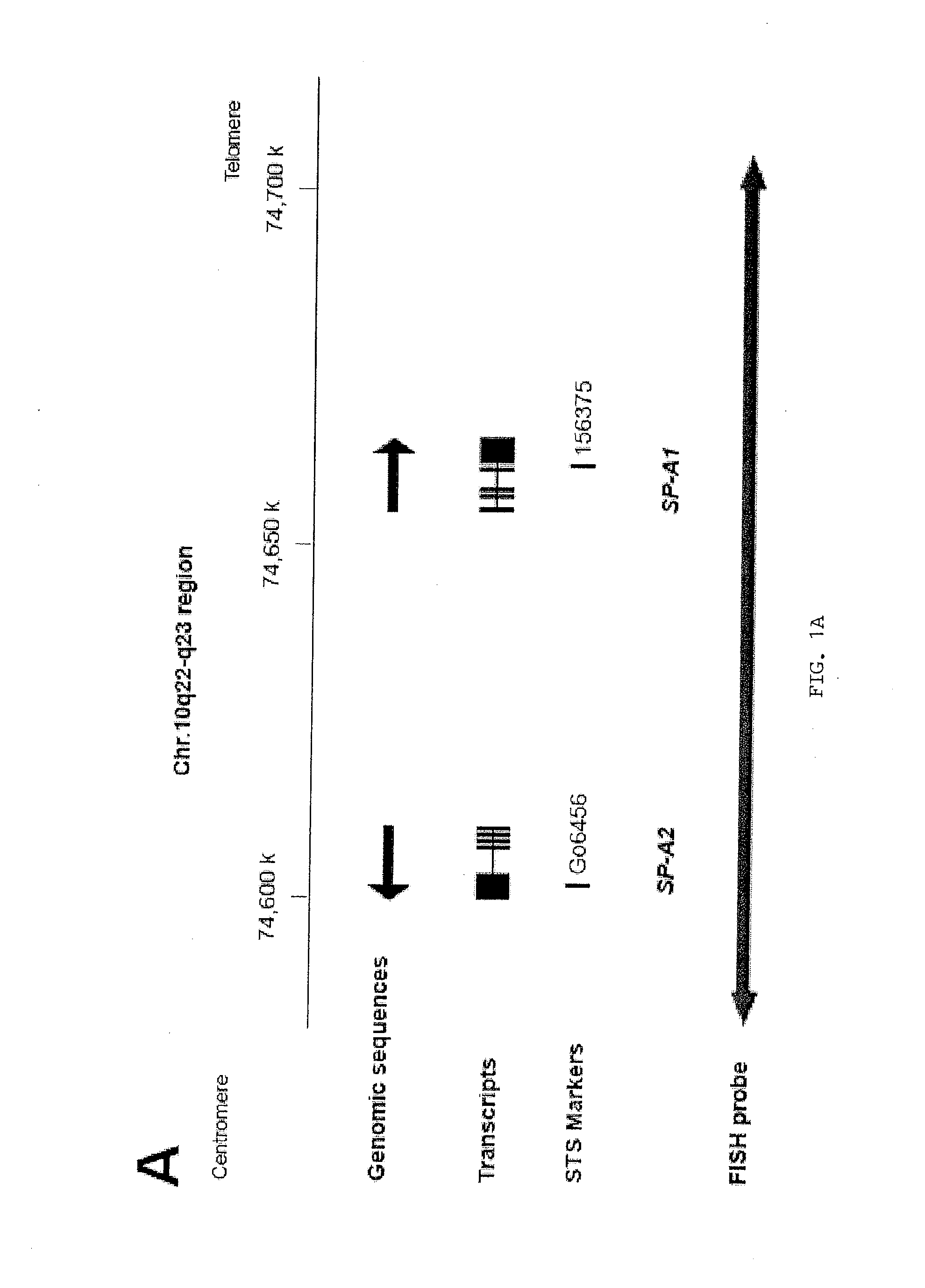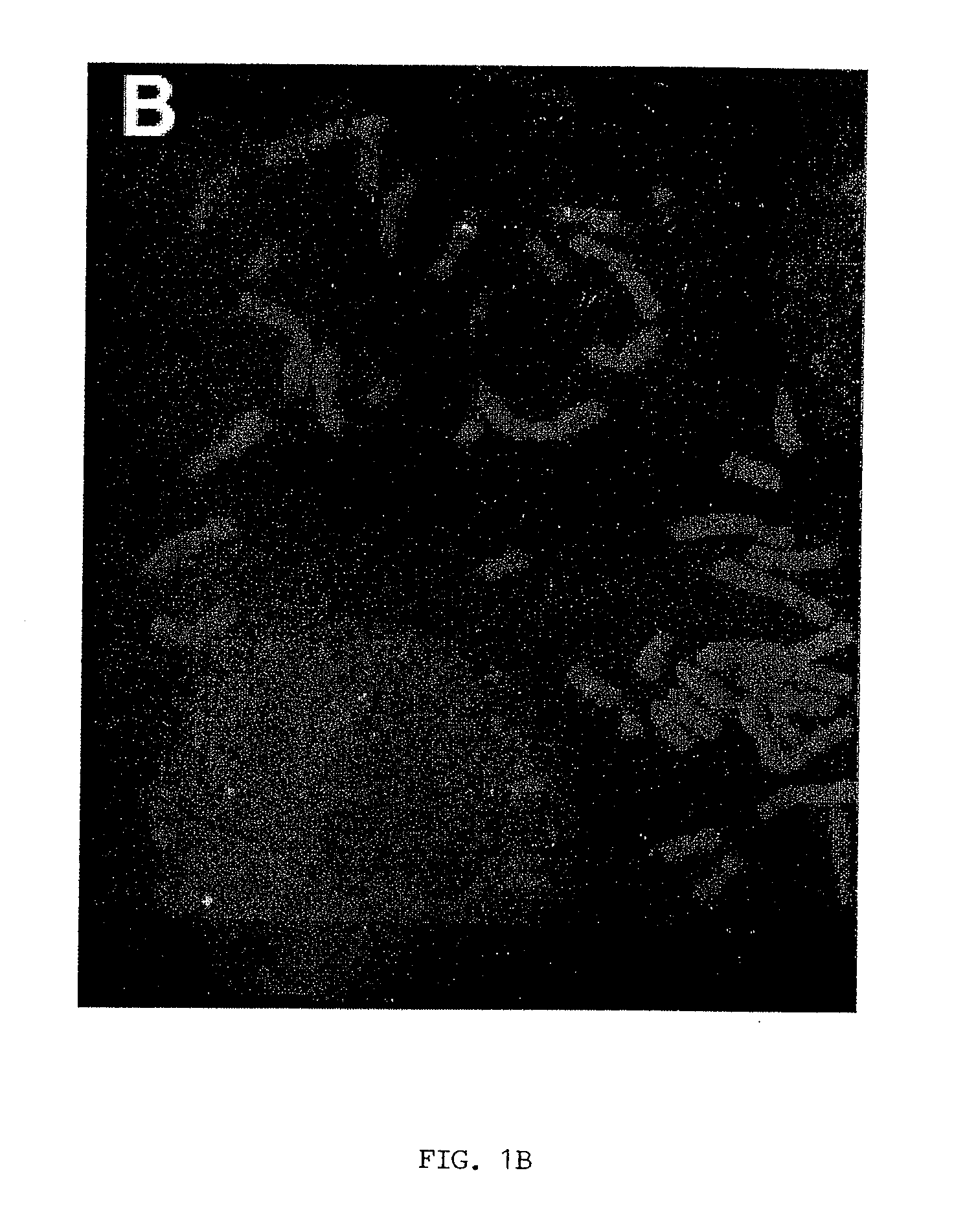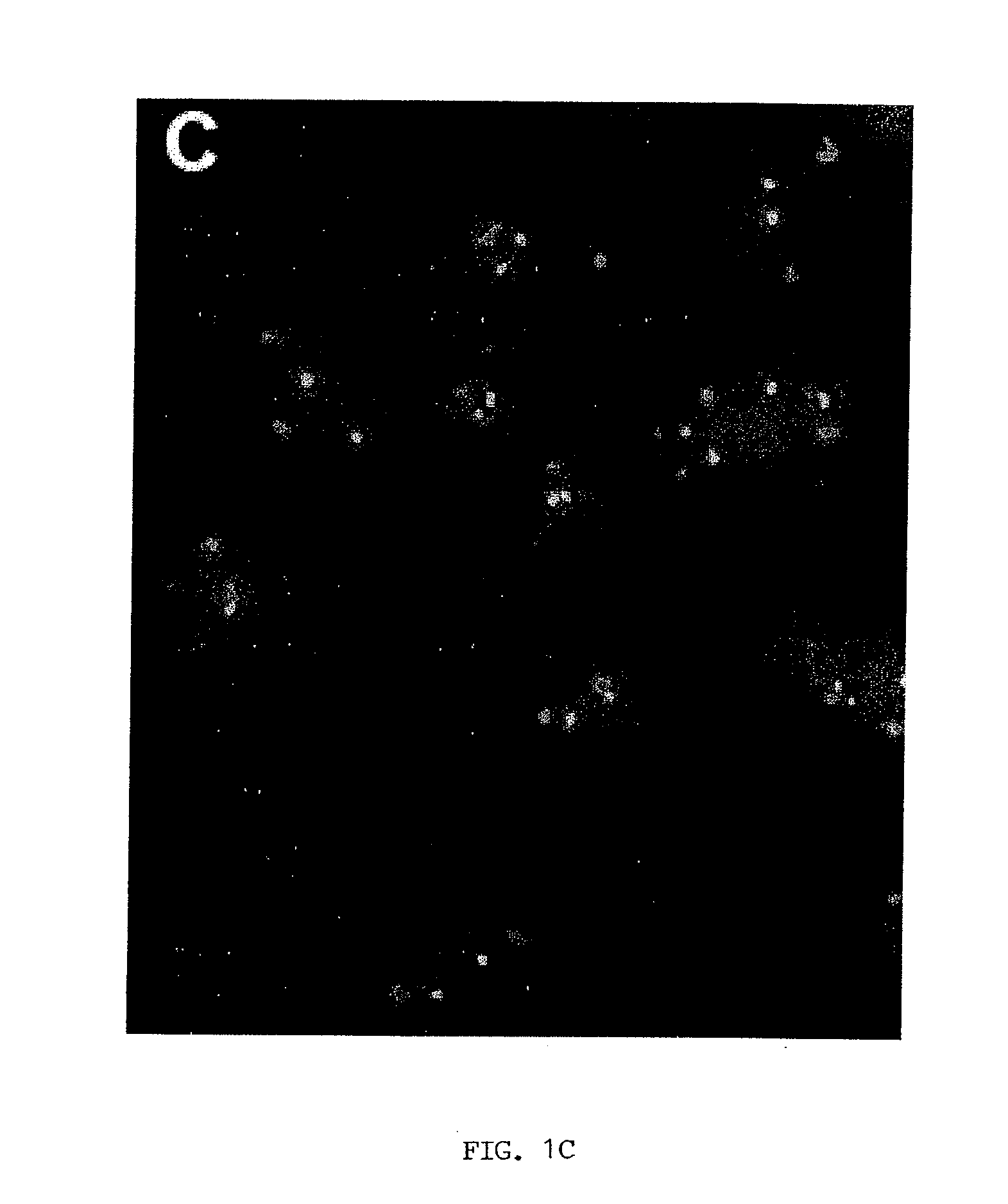Detection and diagnosis of smoking related cancers
- Summary
- Abstract
- Description
- Claims
- Application Information
AI Technical Summary
Benefits of technology
Problems solved by technology
Method used
Image
Examples
example 1
[0292] Methods. The inventor tested three groups of patients based on clinical and radiological data that were classified into non-cancer (Wong et al., 2000), granulomas (Cox et al., 2001) and cancer (Kuroki et al., 1993) groups. The manual method of FISH testing involves hybridizing three separate cytospin samples with the following probe combinations: (1) 3p22.1 and centromeric 3; (2) 10q22-23 and centromeric 10; and (3) centromeric 3, 7, 17 and 9p21.3
[0293] Scoring of probe sets. Probes 1 and 2 are scored by counting polysomies or monosomies of centromeric 3 and 10 and 3p22.1 and 10q22-23 and expressed as a ratio or deletions of 3p22.1 and 10q22-23 in 100 epithelial cells and 100 neutrophils. Probe 3 is a four-color FISH probe and abnormalities are expressed as monosomies or polysomies counted in 25 of the most atypical epithelial cells and 25 neutrophils. The total number of genetic aberrations from A+B in epithelial cells and neutrophils are scored.
[0294] Results. There were ...
example 2
Prognostic Value of Surfactant Protein A Gene Deletion for Patients with Stage I Non-Small Cell Lung Cancer
[0304] Materials—Tissue Samples. A total of 505 consecutive patients with stage 1 NSCLC underwent definitive surgical resection, defined as a lobectomy or a pneumonectomy, from 1986 to 1996 at The University of Texas MD Anderson Cancer Center. Tissue samples from 130 patients from this group were found to contain an adequate number of both tumor cells and cells from adjacent normal bronchiole epithelium and were included in this study. Follow-up information was obtained from chart reviews and reports from the institution's tumor registry service. Lung tissues from 63 patients who were treated at this institution during the same period but who were not diagnosed with lung cancer were obtained and used as controls. The study design was reviewed and approved by the institution's surveillance committee. No patients received adjuvant chemotherapy or radiation therapy before or afte...
example 3
Predictions of Patients' Cancer Status Using a Combination of Probes
[0324] The primary objective of the study was to identify a set of probes and image analysis parameters which can separate the benign cases from the malignant groups. A total of 61 sputum cases were examined. Twenty-eight were benign cases and the rest were malignant tumors. Four patients were deleted from the study due to uncertainty concerning their disease status. Three additional patients were deleted due to missing information of image analysis parameters. Therefore, there were 28 maligant cases and 26 benign cases in the analysis dataset. Eight “in-house” probes were used: Epithelial cep10 10q deletion, Epithelial cep10 polisomies, Epithelial cep3 3p deletion, Epithelial cep3 polisomies, Neutrophils cep10 10q deletion, Neutrophils cep10 polisomies, Neutrophils cep3 3p deletion, Neutrophils cep3 polisomies. Furthermore, commercially available probes (Neutrophils A, B, C, D and Epithelial A, B, C, D) were also ...
PUM
| Property | Measurement | Unit |
|---|---|---|
| Mass | aaaaa | aaaaa |
| Fraction | aaaaa | aaaaa |
| Fraction | aaaaa | aaaaa |
Abstract
Description
Claims
Application Information
 Login to View More
Login to View More - R&D
- Intellectual Property
- Life Sciences
- Materials
- Tech Scout
- Unparalleled Data Quality
- Higher Quality Content
- 60% Fewer Hallucinations
Browse by: Latest US Patents, China's latest patents, Technical Efficacy Thesaurus, Application Domain, Technology Topic, Popular Technical Reports.
© 2025 PatSnap. All rights reserved.Legal|Privacy policy|Modern Slavery Act Transparency Statement|Sitemap|About US| Contact US: help@patsnap.com



